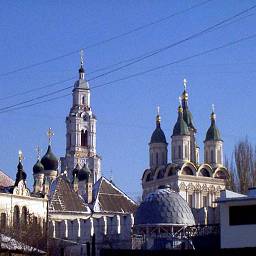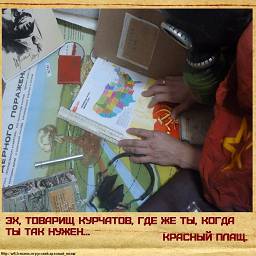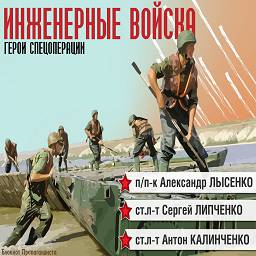Путь:
Quick Links
Language [ ENGLISH РУССКИЙ ]
Search
Продвинутый поиск
New Materials
- Ease of Implementation and Efficiency: The Advantages of DOBOT Collaborative Robots 2025-09-27
- Comprehending Viagra Soft: Advantages, Drawbacks, and Application 2025-01-24
- Affordable Instagram Growth with InstagFollowers.shop: Free Followers and Guaranteed Results 2024-12-18
- Buy instagram followers 2020-09-09
- FISCAL FEDERALISM THE CANADIAN EXPERIENCE 2020-03-22
- Analysis of differentiation of socio-economic development of the Russian regions 2020-03-22
- Economic development in the Russian regions: institutional and macroeconomic problems. 2020-03-22
- Russia's North: Economic Problems of Development 2020-03-22
- Problems of Fiscal Federalism in Russia 2020-03-22
- REGIONAL ASPECTS OF THE FEDERAL ECONOMIC POLICY 2020-03-22
- THE TELEVISIONS PROJECT 2020-03-22
- Journeys into History Through the Future 2020-03-22
- Artists Bring the Computer to Life 2020-03-22
- Culture in the Upcoming Millenium 2020-03-22
- What is a work of telecommunicative art 2020-03-22
Картинка недели
Union maniac
Evaluation section:
0
Union Punk is a wide circle of like-minded people who respect the era of the Soviet Union.
In many cities and countries of the former USSR there were fans who willingly share their memories with the same fans.
Proud of old times, constantly compare reality with the past.


Категории
SOVIET MEMORIALS AND MEMORABILIA IN St. Petersburg
Date of publication: 2017-10-19 17:32:49Дата модификации: 2017-10-19 17:32:49
Views: 1427
Author: admin
Although the Soviet Union no longer exists and communism has been at least nominally disavowed, its seventy-four years left its mark on the face of the city. It is only a matter of time before all the socialist statues, slogans, and memorial plaques are removed, the names changed, and the Soviet-built buildings fall down, so if socialist kitsch turns you on at all, don't put it off until your next visit - photograph now.
The Cruiser Aurora
The blank shot that signalled the start of the Revolution was fired from the main gun of this 19th century battleship. The next day, Lenin announced the beginning of the communist era from its radio-cabin. Recent reconstruction has made the ship look like an oversized toy.
Admission is free. Petrogradskaya Naberezhnaya 4. Metro: Gorkovskaya. Open 10:30-16:00, closed Mondays and Fridays.
Politically Active Statues
St. Petersburg celebrated its 290th birthday in 1993 by replacing a phallic Lenin bust in the Moscow Train Station with a statue of Peter the Great, and it probably won't be too long before the other Lenins are moved to museums or melted down to make metro tokens. Lenin buffs can see a slightly rotund version of the Big Bolshy in front of the Warsaw Train Station pointing the way to the city center. Outside the Finland Train Station is a stirring depiction of a speech Lenin gave from the top of an armored car after returning from Finland just after the February Revolution. Note he is pointing across the river to a tall orange building with a large antenna - this is the Bolshoi Dom, the local headquarters of the Interior Ministry and the KGB. Perhaps the best Lenin is on Moskovsky Prospekt in front of a classically nightmarish Stalin building where a sixteen-meter tall Bad Vlad daintily proffers his cap to the proletariat. Traditionalists can see the statues of Marx and Engels in the park between the Smolny (where there is another fine Lenin statue as well) and Proletarian Dictatorship Square.
Monument to the Heroic Defenders of Leningrad
This large monument greets travellers arriving from the airport or coming in by car from the south. Unveiled on V-E Day in 1975, the monument features classic socialist-style inspirational statues of soldiers and civilians in dramatic poses as well as a somber underground museum dedicated to the plight of Leningrad during the war.
Ploshchad Pobedy. Metro: Moskovskaya then a ten minute walk or one stop south on any bus or trolley.
The Metro
The history of the metro dates back to the time of Tsar Alexander I when an engineer came to the tsar with the idea of digging a tunnel from the center of the city to Vasilievsky Island. The tsar responded by ordering him "not to engage in any harebrained schemes in the future." This harebrained scheme proved more durable than tsarism, and in 1955 the Kirovsky-Vyborgskaya line (now called line 1) opened with eight stations. Three other lines were to follow and currently construction on the Pravoberezhnaya (fourth) line continues with several new stations planned for the northwest areas of the city.
St. Petersburg's metro is not nearly as ostentatious as the one in Moscow and for the most part it exemplifies function over form. Still, some of the oldest stations embody the concept of the metro as "people's palaces" and are crammed to the hilt with communist propaganda and self-glorification. The hammer-and-sickle theme is frequent along with bronze stars, laurel wreaths, industrial tools, and wheat stalks set on imposing marble walls.
Several stations boast funky mosaics, like Vladimirskaya (the abundance of happy socialist life), Baltiiskaya (the cruiser Aurora firing on the Winter Palace), Ploshchad Lenina (humungus Lenin greeting people as they leave the escalator), and Avtovo (Mother Country). Look carefully at the bronze wheels on the arches in Ploshchad Vosstaniya and you will see depictions of Lenin delivering one of his interminable speeches. Narvskaya is laden with consciousness-raising statuettes of soldiers, peasants, and intellectuals in dramatic poses. Kirovsky Zavod is noteworthy for its canonization of the industrial world, a reminder that the Kirov Factory was the most revolutionary of revolutionary factories. The idea behind Avtovo was to use it as an underground palace of sorts where the people could party at officially organized festivities during the '50s. The more modern stations tend to be pretty boring though Mayakovskaya boasts neo-1960s Chinese restaurant decor, and a depiction of tsarist troops suppressing a demonstration alights the top of the escalator at Gostiny Dvor.
Soviet architecture
Given the beauty of St. Petersburg's pre-Revolutionary architecture, Soviet architects attempting to beautify the city landscape had a tough act to follow. In Moscow they took care of the problem by tearing down a large portion of the city's historic center and erecting yellowish Stalinist slabs and neanderthalish wedding-cake monstrosities in their wake. Fortunately this method was not applied to St. Petersburg. Instead, Soviet architects built up the outskirts of the city based on a concept of beauty which was redefined every couple of decades. Eventually they arrived at the ultimate architectural conclusion: the huge faceless concrete slab, as can be seen all across the former Soviet Bloc. For a real trip into the Twilight Zone, visit the ultra-new regions like Leninsky Prospekt, Rzhevka, Kupchino, or the edge of Vasilievsky Island by the Primorskaya metro station.
Moskovsky Prospekt, the main road from the airport to the center, provides an excellent architectural retrospective spanning two centuries. The area closest to the airport has been built up in the last two decades, and judging by the quality of construction, will probably be down again in another two. Past the war memorial begins the late Stalinist age, known for powerful block forms (including square balconies and pillars), stone towers, and huge imposing archways. Often behind these buildings are the mass-produced Khrushchev-era buildings, or Khrushchovki as they are condescendingly dubbed. These five-storey grey brick buildings, typified by their low ceilings and small rooms, were a part of Khrushchev's drive in the late '50s and early '60s to provide everyone with their own living space. Soviet architecture more or less ends and pre-Revolutionary begins when you cross Obvodny Kanal, the old southern city limit.
Evaluation of the document:
0
Article description: The Cruiser Aurora
Politically Active Statues
Monument to the Heroic Defenders of Leningrad
The Metro
Soviet architecture SOVIET MEMORIALS AND MEMORABILIA IN St. Petersburg
Albums:
Other articles of the section: Union maniac
Previous WHAT will bring with you to RussiaNextThe issue focuses on the results of the Moscow G-7 plus Russia Safety and Security Summit
Similar articles:
Новые альбомы:
Nested sections




_cоветский_совьет_панк_моддинг.jpg)
_известные_бренды_на_советский_манер.jpg)

_косплей_совьет_панк.jpg)

_стенгазета_союз-маньяка.jpg)
_юмор_в_стиле_союз-маньяк.jpg)

